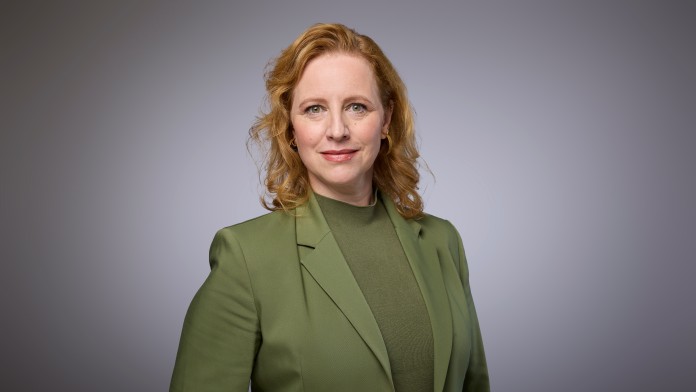Press Release from 2023-04-24 / Group, KfW Research
Municipalities invest EUR 4 billion in climate change mitigation and adaptation
- Preliminary evaluation of the representative KfW Municipal Panel
- Climate targets mean communities, municipalities and districts need to invest much more
- Municipalities unsure of financial viability
According to an estimate by the representative KfW Municipal Panel 2023, communities, municipalities and districts in Germany invested a combined EUR 2.9 billion in climate action measures in the year 2021. They have budgeted a similar volume of approx. EUR 2.5 billion on average per year in the medium-term financial planning for the coming years. Municipalities budgeted a further approx. EUR 1 billion per year for climate change adaptation measures such as protection from floods and heavy rainfall – both in the fiscal year 2021 and on average per year in their medium-term financial planning. That means just under EUR 4 billion or around 15% of all municipal investment made in the year 2021 went to climate change mitigation and adaptation. More than 80 % of municipalities estimate that investment needs to increase in both areas in the future.
Municipalities have to invest more each year in order for the green transformation to succeed. According to an analysis by KfW Research, around EUR 5 trillion will need to be invested across the economy as a whole in order for Germany to become climate neutral by the middle of the century. The public sector will have to provide around EUR 500 billion of this sum, with around 30% (EUR 150 billion) expected to be allocated by local governments. That means communities, municipalities and districts will need to invest an average of around EUR 5.8 billion per year in climate action measures – a good one and a half times more than today – to make their contribution to achieving the climate targets by 2045.
The majority of local governments see the need to increase investment in climate change mitigation and adaptation, but there are questions around how this is to be funded. As local governments cannot increase the funds at their disposal at will, either the federal and state governments will have to increase investment subsidies and promotional funds, or more expenditures may have to be financed with debt. However, there are strict economic and budgetary limits to increasing debt levels. These restrictions are reflected in the views of municipal treasurers. Only 3% of those surveyed expect to be able to fully cover the rising investment volumes in future budgets, while a further 36% believe their budgets can at least meet a large part of the requirements. However, six in ten municipalities expect the opposite. They believe that only a small portion of the required investment can actually be realised (54%) or that the needs cannot be covered at all (7%).
When asked what instruments would make it easier for municipalities to fund the higher climate investments, they first mentioned an improved promotional landscape with simpler (82%), additional (73%) and more targeted promotional programmes (54%). An improved overall funding position (78%) is also on the wishlist of many. Nearly half the municipalities (46%) consider simplifying the public procurement law to be a relevant step, while less than a quarter believe that classifying climate action as a mandatory task or changing debt regulations would be useful.
“The data of the KfW Municipal Panel shows that communities, municipalities and districts must significantly increase their current investment levels in order to reach the goal of climate neutrality. Climate change adaptation, too, will require further substantial investment at municipal level”, said Dr Fritzi Köhler-Geib, Chief Economist of KfW. “Broad reforms are needed to make progress in this area. Clarifications are necessary not just regarding responsibilities in the federal state but also with respect to the municipalities’ staffing and financial resources to meet the tasks ahead. The shortages of staff and skilled workers are increasingly becoming a key constraint in managing the tasks of the transformation. Investments and accompanying expertise supplement each other. Expertise could also be pooled between municipalities to make it less costly for individual municipalities yet accessible to all. But all of this depends on what financial resources municipalities can expect to have at their disposal with sufficient planning certainty for the future.”
Asked what were the three largest investment projects in the area of climate action in the past three years, most municipalities (52%) mentioned the energy-efficient modernisation of buildings, while for nearly one third (32%), the installation of photovoltaic systems was among the most financially challenging projects, and for around 22% it was the conversion of lighting to LEDs. These were followed by investments in public transport and cycling infrastructure (17%), the expansion of electric mobility (15%) and, with less than 10% each, renaturation measures and the construction of new energy-efficient buildings. The climate change adaptation measures most frequently implemented were protection from floods and heavy rainfall (41%), followed by renaturation (22%), building refurbishment (17%) and thermal protection measures (12%). In the past three years, 22% of municipalities explicitly did not implement any climate change adaptation measures.
The preliminary evaluation of the new KfW Municipal Panel 2023 can be found at
www.kfw.de/fokus.
The full final report is scheduled for presentation in May.


Share page
To share the content of this page with your network, click on one of the icons below.
Note on data protection: When you share content, your personal data is transferred to the selected network.
Data protection
Alternatively, you can also copy the short link: https://www.kfw.de/s/enkBbm2w.C5tA
Copy link Link copied